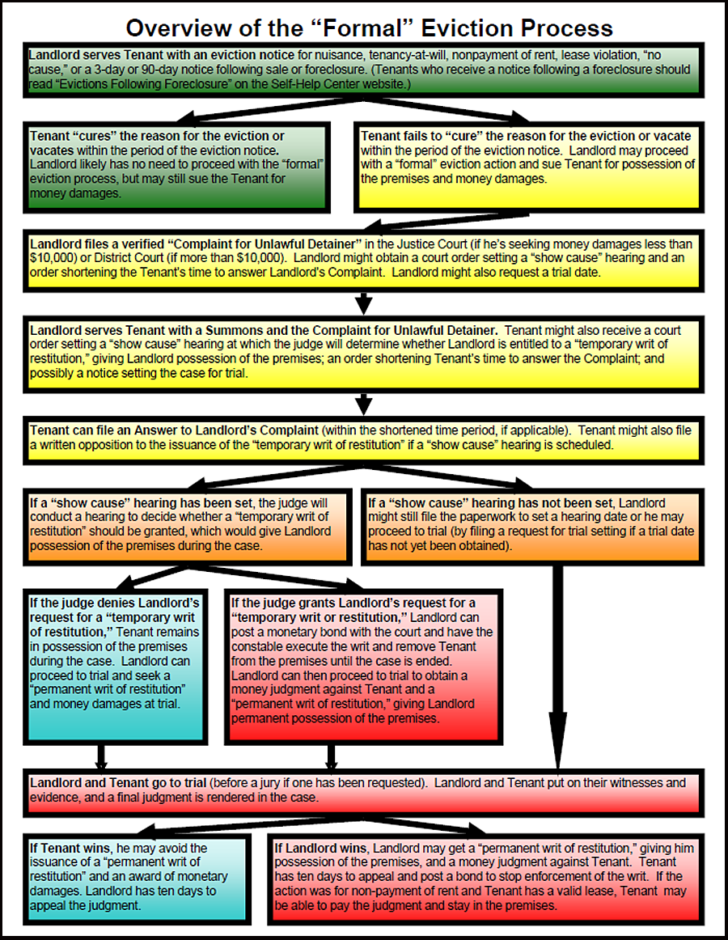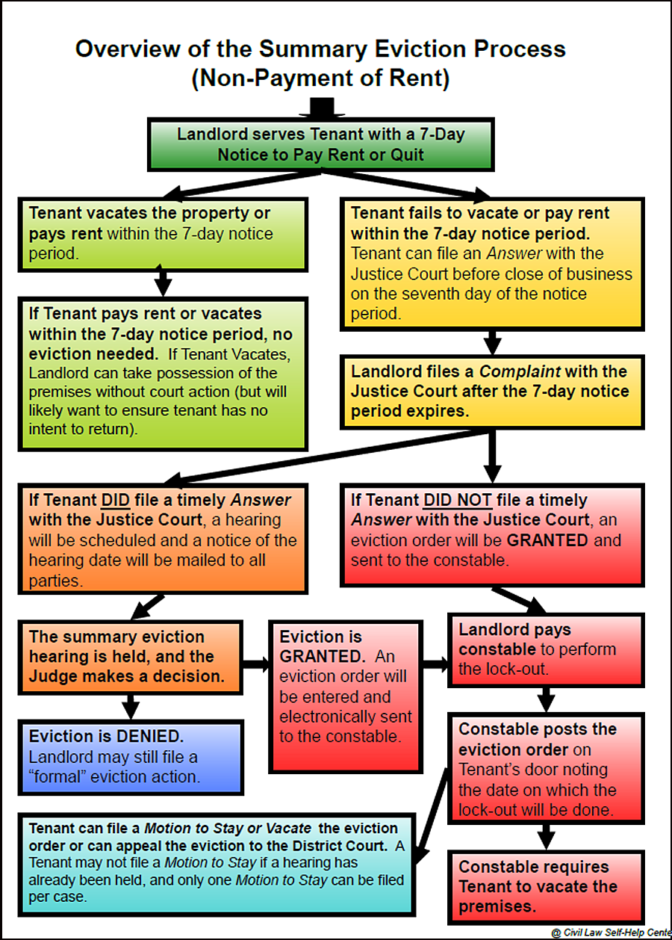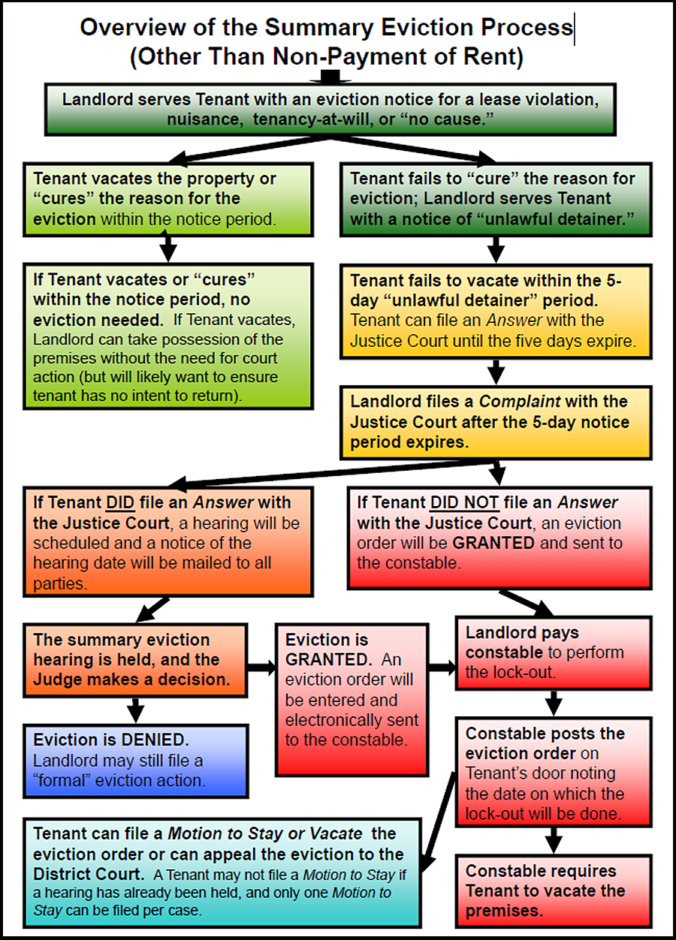Tenant Eviction Process

Dec 30, 2024, 3:25 PM PT Shelter Realty Inc. Welcomes Attorney Melissa R. Romano as In-House Counsel – Shelter Realty Inc. is proud to announce its partnership with esteemed attorney Melissa R. Romano. Ms. Romano will join the Shelter Realty team as in-house counsel, bringing her extensive legal expertise to enhance the company’s comprehensive services. https://www.8newsnow.com/business/…
Unfortunately, evicting a Tenant is a duty most Property Managers are familiar with. Property Managers must be mindful and compassionate of a Tenant’s circumstances, but keep the Landlord’s best interests at heart.
The most common reason a Property Manager starts the eviction process is due to non-payment of rent. However, there are a few different scenarios where a Property Manager is forced into eviction proceedings. In addition to non-payment of rent, violations of the lease, health and safety concerns, or legal matters are other scenarios that can lead to a Tenant eviction. For example, if a Tenant subleases the property, that is grounds for eviction.
It is essential that Property Managers have a firm understanding of the Nevada Landlord / Tenant Eviction Laws in order to protect the rights of all parties involved.
Nevada law is specific in the procedures required to lawfully evict a Tenant. For instance, all eviction notices must be served by a licensed process server. Additionally, all timelines must be met before moving onto the next stage of the eviction process.

Examples Of Eviction Notices:
7 Day Pay-or-Quit
- This notice is used for non-payment of rent from a Tenant. It instructs the Tenant to either pay rent or move-out. It can be posted the day after rent was due and not received. But, if there is a grace period, we must wait until after the grace period ends to serve. The seven day notice period does not count the day of service, Fridays, Saturdays, Sundays, or legal holidays. Any time during the waiting period, the Landlord must accept full rent, if it is offered. Partial payments can be accepted if the Landlord so chooses. If the Landlord accepts partial payment, a new notice with the remaining balance is to be served. All eviction notices must be served by a sheriff, constable, or licensed process server. Therefore, the Landlord and/or Property Manager may not serve these notices themselves.
3 Day Nuisance
- This notice is used for instructing Tenants to correct an issue such as: nuisance, waste, improper assignment or sublet, unlawful business, or illegal drug use. If the issue is not corrected, it must be followed up with a 5-Day Notice to Quit for Unlawful Detainer.
30 Day No Cause
- This notice is used to instruct a Tenant to move-out in 30 days. This can only be served at the end of a lease agreement or if there is no lease. If the Tenant does not move-out after 30-days, it must be followed up with a 5-Day Notice to Quit for Unlawful Detainer.
5 Day Tenancy-at-Will
- This notice is used to instruct a Tenant to move-out within 5 days. This is only used if the homeowner has given permission to someone to stay at the home for an indefinite amount of time with no periodic rent paid or reserved.
5 Day Lease Violation
- This notice is used for instructing Tenants to correct a lease violation or move-out. If the issue is not corrected, it must be followed up with a 5-Day Notice to Quit for Unlawful Detainer.
5 Day Notice to Quit for Unlawful Detainer
- This notice is used to follow up the 3-Day Nuisance, 30-Day No Cause, 5-Day Tenancy-at-Will, and 5-Day Lease Violation notices.
As you can see, there are many types of notices. Each notice is used for a specific reason and Property Managers must be well versed in the eviction laws to ensure the correct notice is served, and served properly.
Once the eviction proceedings have been completed and the Tenant has vacated the premises, any remaining property in the home must be safely stored for 30 days, unless the Tenant states in writing that the remaining items may be disposed of. The Landlord may charge reasonable storage fees that are actually incurred, or they may remain safely stored in the home. Either way, the items must be inventoried and documented properly. Under no circumstances can the items be held as “ransom” or bargained for unpaid rents.
Overview of the Formal Eviction Flowchart

Summary Eviction Flowchart (Non-Payment)

Summary Eviction Flowchart (Other Than Non-Payment)


